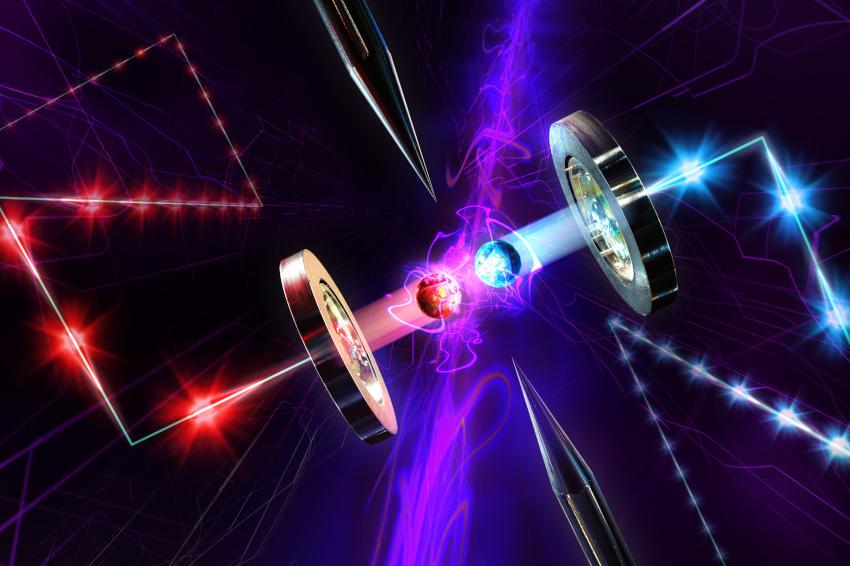Boost for the quantum internet
26.05.2023 - First long-distance quantum repeater node for telecommunication networks.
Quantum networks connect quantum processors or quantum sensors with each other. This allows tap-proof communication and high-performance distributed sensor networks. Between network nodes, quantum information is exchanged by photons that travel through optical waveguides. Over long distances, however, the likelihood of photons being lost increases dramatically. As quantum information cannot simply be copied and amplified, 25 years ago Hans Briegel, Wolfgang Dür, Ignacio Cirac and Peter Zoller, then all at the University of Innsbruck, provided the blueprints for a quantum repeater. These feature light-matter entanglement sources and memories to create entanglement in independent network links that are connected between them by entanglement swap to finally distribute entanglement over long distances.
Quantum physicists led by Ben Lanyon from the University of Innsbruck have now succeeded in building the core parts of a quantum repeater – a fully functioning network node made with two single matter systems enabling entanglement creation with a photon at the standard frequency of the telecommunications network and entanglement swapping operations. The repeater node consists of two calcium ions captured in an ion trap within an optical resonator as well as single photon conversion to the telecom wavelength.
The scientists thus demonstrated the transfer of quantum information over a 50-kilometer-long optical fiber, with the quantum repeater placed exactly halfway between starting and end point. The researchers were also able to calculate which improvements of this design would be necessary to make transmission over 800 kilometers possible which would allow to connect Innsbruck to Vienna. (Source: U. Innsbruck)
Link: Quantum Optics & Spectroscopy, Innsbruck University, Innsbruck, Austria







